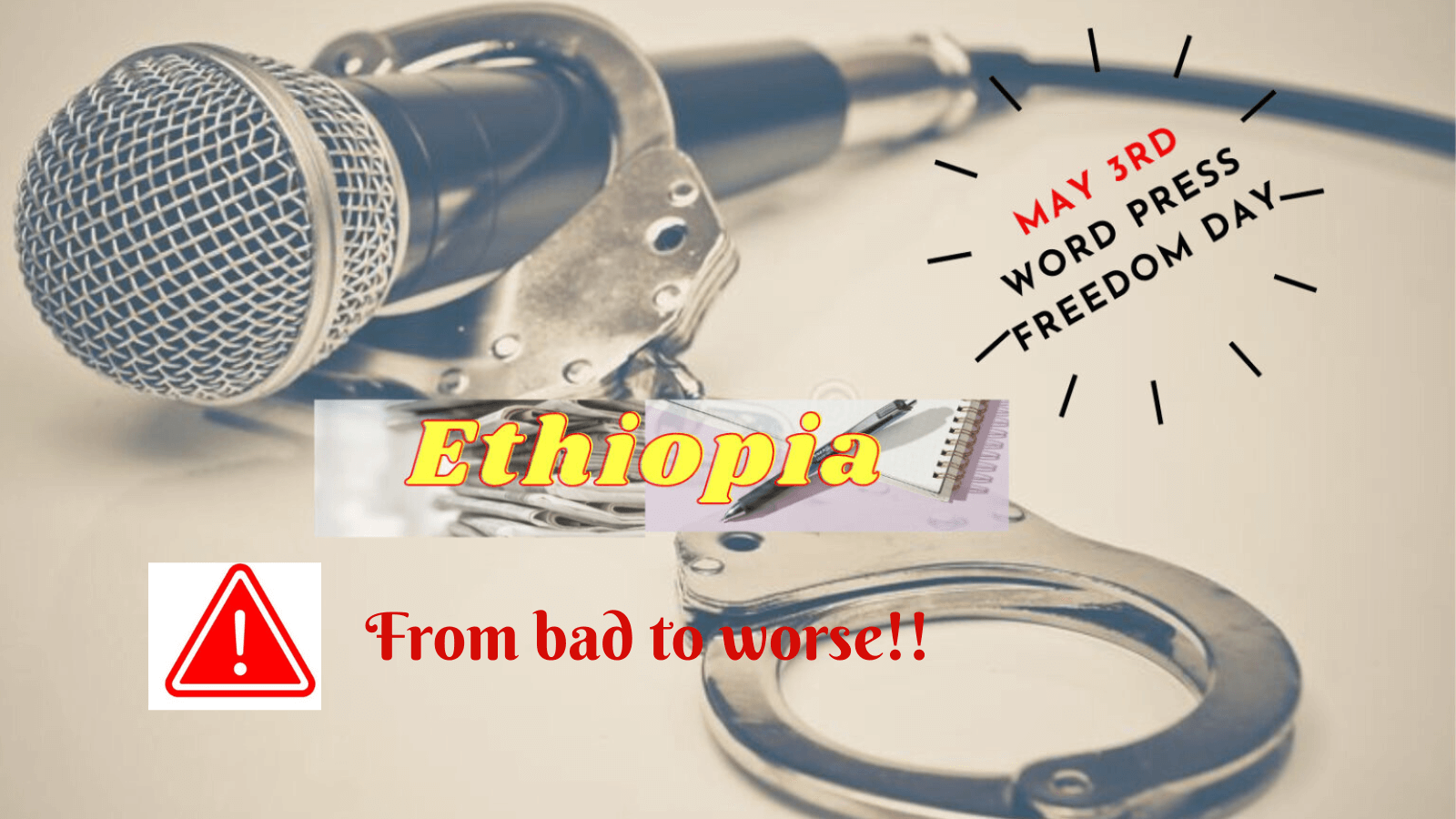Economic analysis: Towards a dynamic job creation framework for Ethiopia
Getachew T. Alemu, For Addis Standard
Addis Abeba, Oct. 25/2018 – There seems to be no other country that is seeing the sea of change that ours is witnessing. While trying to recover from the instability triggered by years of public protest in various localities, it is also marching towards changes that could have been considered dreams months back. A latest set of change is the second time reshuffle of the cabinet by Prime Minister Abiy Ahmed, widely considered to be the Captain of the change, wherein half of the cabinet members are women. Such a historic shift, indeed, from the patriarchal dominance of the executive branch!
Equally important is the change in the structure of the executive, with many ministries dismantled and new ones formed. One such institution that came to existence with the latest reshuffle, and is the interest of this article, is the Commission for Job Creation. An attempt towards responding to what could be said as the primary reason for the public disappointment, especially of youth, that fueled the violent public protest of the past three or four years, the Commission is mandated to identify, study, implement and monitor new job creation schemes. It takes nothing more than observing the fact that 70pc of Ethiopia’s population is under 30 to appreciate the decision made by Primer Abiy.
Looking at the details of the economic context from which this Commission comes to existence, one would see why it took us so long to have it. The Ethiopian economy has been growing at an average rate of 10% in the last 15 years. GDP per capita has reached 783 dollars, while per capita income has leapfrogged to 863 dollars. In close relationship with the GDP growth, access to economic and social infrastructure has seen considerable improvement over the years. Distance to all weather road, for instance, has decreased to 5km, while that of primary education enrollment and life expectancy have gone to 87% and 65.5 years, respectively. Overall, Ethiopia has become one of the recent success stories that both African and the International media portray as a showcase to policy clarity and government commitment.
One thing that has been staining this marvelous achievement has, however, been unemployment. Unemployment, in both urban and rural areas, remains high. According to CSA, urban unemployment stands at 17% (excluding those operating in the informal sector and underemployed). Although no official stat for rural areas, redundant labor in rural areas remain considerable.
Despite the GDP growth, the ability of the economy to create jobs has been low, compared to the demand for jobs. Lately figures show that public sector job creation schemes managed to create a total of 2.1 million jobs, while the number of people joining the labor market varies from 4 to 6 million (depending on which source one uses).
Structurally, job creation in Ethiopia is highly dependent on the public sector. Government remains the major employer, whereas it also serves as the major driver for job creation by the private sector. It is important to remind that the Ethiopian private sector, as least, as it stand, is dependent on the state for its survival.
Looking into the current job creation schemes promoted by the public sector might improve the understanding. In its effort to provide necessary services, government employs people at various ranks and offices. Latest figures show that a total of 1.6 million civil servants exists in the state’s payroll. Such a huge number, by any standard. These are individuals collecting taxes, issuing passports, treating patients, teaching kids, cleaning the streets and so on.
On the other hand, government operates dedicated job creation schemes. A major one out of these is the public housing and construction sector scheme. Under these scheme, the government organizes small and medium enterprises (SMEs) to undertake works through a subcontracting scheme from major contractors. Hence, these people include youth working on electrical, mechanical, sanitary, flooring, water proofing, painting and finishing, gardening and other works in the public housing schemes. Also included in these scheme are youth organized under SMEs to undertake feeder road and rural road construction (and consulting). In the later case, youth trained in various construction fields are organized to form enterprises that would be awarded with contract to conduct construction works.
So much as the government is invested hugely in public housing, the SMEs in these schemes have been relatively successful. This, however, does not mean the story is all rosy. It rather is filled with high level of enterprise failure, poor standard and quality of work, poor financial management, subpar contract management and delayed delivery.
Yet another schemes of job creation, but closely related with the first one, is the SME development effort undertaken by local governments. This is a dedicated channel of organizing enterprises in select areas, from urban agriculture to small manufacturing outlets, supported with customized financing by the government. The youth organized under this scheme are identified and screened by local government, which provides them with groups loans and working spaces, often times with generic training too.
A latest addition to the largely SME-based job creation scheme is the revolving youth fund system, wherein the federal government channels money to regional governments, which organize youth in enterprises and provide them with credit to start their own business. The scheme is managed by Commercial Bank of Ethiopia (CBE) in close collaboration with Microfinance Institutions (MFIs) and regional authorities.
A bit different from the above, but still dependent on the state, is the the employment opportunity by state enterprises conducting mega projects for the government. From sugar factories to hydroelectric dams, enterprises conducting these projects are expected to give priority to employing young people. Tens of thousands of youth are employed under these scheme, and remain working in even harsh environments.
Marginally contributing to state-dependent job creation are schemes run by local administrations and municipalities. This scheme also follows the SME model, but relates to providing local government and municipal services, such as dry waste collection and disposal.
In contrast, job creation by the private sector remains marginal. This, however, does not mean that there is no improvement. There actually is. With the growing activity of the private sector, the share of jobs created by the private sector is growing. One could see this from two angels.
On the one hand, more jobs are being created with the natural growth of the private sector. This entails jobs created to make the daily business of the private sector happen. Although no organized data exists about this, estimates show that the private sector creates from 200,000 to 500,000 jobs per annum.
Another chunk in this equation is jobs created by the state-induced growth of the private sector. And a key part in here is jobs created by Foreign Direct Investment (FDI). A typical case is the jobs created in Industrial Parks (IPs) built by the state, but private businesses are run in it. Latest figures show that a total of 60,000 jobs are created by firms working in the IPs.
Other than the above mentioned, jobs created by non-governmental and entrepreneurs could also be considered in the overall job creation matrix of the nation.
Although all these schemes are up and running at the moment, the mismatch between the demand for jobs and the supply of jobs remain considerable. Hence, unemployment remains the major burden to the economy, to an extent that Ethiopia’s growth is said to be “jobless growth”.
What seems to be a major hindrance in all these the static nature of the policy guidance that the state has been providing for job creation. If one is to consider the SME-based job creation schemes, for instance, they are organized in a predefined manner, wherein the whole guidance is based on static list of activities to be financed and supported. Either of the list of activities or model of financing are made to change based on shifts in demand.
Thus, under SME based job creation, for instance, there is no way that an individual with a business idea, in areas, for example, as community health, with a potential to employ hundreds of youth, could get financed. This happens because the support is only for readymade list of static activities, does not finance individuals and has only a single model of financing.
Although the local market is witnessing considerable changes with time, both due to its internal dynamics and links with the global economy, the list of activities for the model is not changing.
Another paradox is the fact that the model lives in contrast to the economy. Whereas the overall economy is seeing shifts from agriculture to services, the model sticks to supporting manufacturing activities. This is despite the market challenge the enterprises in this sector faces.
What remains intriguing is the fact that the support given to the SMEs organized under different schemes is limited to generic training and financing. Support in key areas, such as product quality improvement, marketing, packaging, financial management, distribution, risk management and so on are nonexistent.
The overall nature of the schemes that the focus is in counting the number of SMEs organized and the amount of loan disbursed. So much as the enterprises are made to be born and raised in a manner that makes them dependent on the state, their competitiveness, innovativeness and ability to withstand market shocks is considerably hindered. Lack of support that enables them with this means that the case gets worse as the enterprises moves through their growth path.
Entry to market and subsequent growth brings its own challenge to the SMEs. But there is no ready made Business Development Service (BDS) to consult them on market information, customer behaviors, nature and strategy of competition, emerging demand, linkage with other sectors and industries, and so on. Hence, under the current scheme an SME is created to remain just an entry level SME.
In the other sectors too, the public policy guidance has largely been static. Under the scheme of mega projects, for instance, the modality has only been about requiring contracted firms to employ youth. This happens without providing or facilitating support service for skilling and reskilling, performance-based financing, access to technology and etc. The same can be said for the state-supported private sector job creation in the IPs, with the companies in these IPs struggling with huge staff turnover.
Over the past four years, fiscal effectiveness of the state has been affected hugely due to political instability. Both revenue generation, in the form of tax and non-tax revenue collection, as well as expenditure, mainly capital, has serious been challenged. Furthering this was the inefficiency that has been affecting major state investments, such as public housing, sugar factories, fertilizer factories, hydroelectric dams, agro-processing parks and so on. This has been translating onto a total conundrum in the job creation schemes to an extent that unemployment has become a norm than an exception, especially in urban centers and towns.
It all shows that the policy guidance needs a change. And no institution is better suited to take this responsibility than the newly formed Commission for Job Creation (CJC). A major task for the CJC will be shifting the policy guidance from its long overdue static state to a dynamic one that rightly fits the demand from the active labor force, the labor market and the changing structure of the economy.
But this is easy said than done. It is obvious that the state and state-sponsored job creation schemes will continue to be the major interventions, in the short-term. But they need adjustment in a way that they are designed in a comprehensive manner than a piecemeal state they are now. The new dynamic model ought to be designed in a way that is flexible in the list of activities to be financed, in the type of financing it provides and in the form of enterprises supported. Important in here is the fact that the new model should support individual entrepreneurs and has to have various forms of financing (such as venture financing). It is no more possible to live with a linear model of organizing groups and providing a single window of financing.
Further, a full range of business development service, from market identification to product design and onto distribution needs to be available for enterprises.
An additional important element in the policy guidance is availability of skilling and reskilling element. Technology, knowledge and information is changing fast. And that demands continuous change in the skill set of the youth. Hence, a flexible skilling scheme ought to be set parallel to the structure of organizing and financing SMEs.
Unlike the old times, the focus should be on success of SMEs. Success could be measured in volume or value of production, productivity per head, total sale, profit and other related market indicators. Leading SMEs with a guidance that ignores these key market indicators is a recipe for breeding dependence and subsequently failure.
For SMEs organized by local and municipalities, the relationship between their service provision and the customers need to be managed based on purely market principles. We have to end an era where local governments serve as guardians of the SMEs. Local governments should only be playing their regulatory role.
In a medium-term, however, the private sector should be the major employer in the economy. And for that to happen, the government ought to make adjustments in the the labor market, in the business regulations, in the financing system and other related areas. The job, as such of, the CJC will be to collaborate with other respective government agencies to make sure that the business environment is made conducive for job creation by the private sector. In cases where hindrances are there, innovative schemes, such as custom-made financing windows, should be available to the private sector players that create jobs.
It is true that the overall economy needs to trek towards industrialization. In this regard, the future of jobs in Ethiopia will certainly be in the industry sector. And this takes behavioral and structural change in the players of the labor market. Doing so will be another key job in for the CJC.
In terms of opportunity, there is much for the economy to create opportunities in agriculture, STEM, biotechnology, sharing economy and new media. Especially, in agriculture, there is untapped job creation opportunity that CJC could be identifying in areas such as aquaculture, agroforestry, agro-processing, rural businesses, farm-related services (such as leasing of equipment), irrigation and water management, and many more. But since agriculture has an image problem, correcting that image problem will be important. Identifying opportunities in STEM, biotechnology, sharing economy and new media will also be important as the overall global economy is moving towards them.
What will, however, be the silver lining is the fact that dynamicity is important in the policy guidance for job creation. And the newly formed commission should start from committing itself to a dynamic policy guidance if it is to be successful. The fact that there is political commitment from high up, including the Prime Minister, will certainly ease the burden of the commission, in this regards. It, therefore, is time to capitalize on the political commitment to create a sustainable job creation policy guidance for Ethiopia that meets the demand of the days. AS
Editor’s Note: Getachew T. Alemu is a public policy consultant, with over 14 years of experience in public and private sectors. He can be reached at getupfront@gmail.com.









